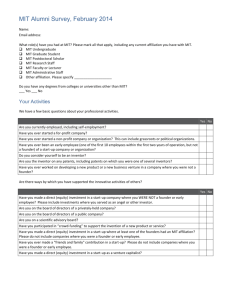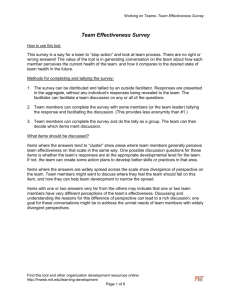Skoltech.
advertisement
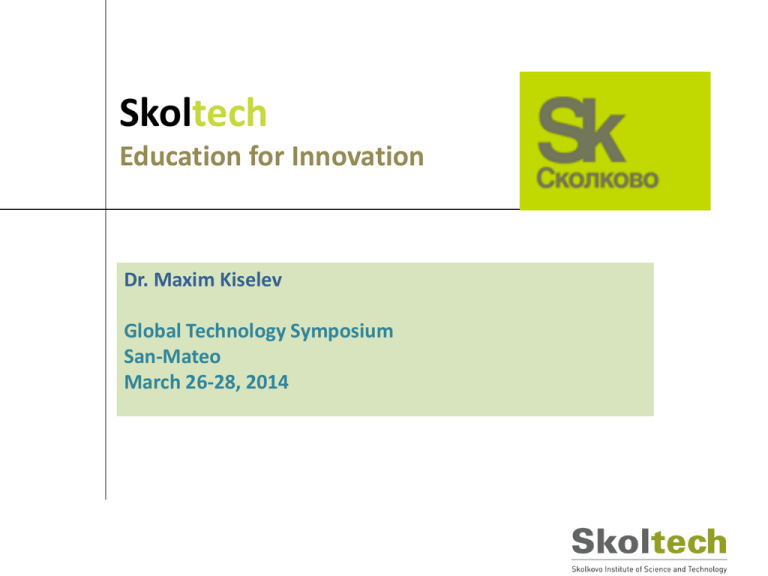
Skoltech Education for Innovation Dr. Maxim Kiselev Global Technology Symposium San-Mateo March 26-28, 2014 A NEW TYPE OF UNIVERSITY DESIGNED TO ACCELERATE INNOVATION July, 2013 | Page 2 Skoltech is a Partner in Developing the Skolkovo Innovation Ecosystem Technology corporations Community Skoltech Innovational environment Innovators International universities City Start-ups – professors, students, graduates Industrial Companies Participants Start ups Market feedback Venture Funds Technopark Mature companies Market feedback Partners 3 Designing Skoltech Why build Skoltech? How would you design a new type of university in Russia? Russia Already Has Great Universities The Problem, in one picture Skoltech at a Glance • A unique Russian institution in an international context • By 2020, Skoltech will have: 200 faculty, 300 post-docs, 1200 MSc and PhD • Integrates science, engineering, and technology • Addressing problems and issues in Information, Energy, Biomedicine, Space, and Nuclear • With strong programs in support of innovation and entrepreneurship • On a new campus, to be built in Skolkovo, near Moscow • Engine of the Skolkovo Innovation City • Special status in the Russian higher education landscape Start-Up Partner: MIT Leadership of Skolkovo deeply impressed by MIT’s economic impact MIT is involved in every aspect of launching Skoltech: – – – – – – – – Recruiting and selecting faculty Planning education Delivering innovation program Engaging in research centers Attracting & educating students Developing policies Planning campus Establishing university endowment Economic Impact • Make Skoltech comparable in scientific and engineering excellence to the best universities in the world • Make Skoltech the most economically impactful institute of science and technology in the world Better Start-up Organizational Goal Close Scientific and engineering excellence Skoltech is designed to be an engine of economic growth 10 Start-Up Principle (A University Organized by Research & Innovation) What is a Skoltech CREI? • Interdisciplinary or post-disciplinary center for research, education, and innovation – Skoltech does not have “departments” (faculties, kafedras) • Each center is organized around a “problem” in need of solutions (in information, energy, life sciences/health, space technology, and nuclear technologies) • Each center is a COLLABORATION: Skoltech + 1 Russian partner university + 1 international university • 10-15 faculty members, 30 postdocs, 40-50 Ph.D. students • $5-10 million annual budget CREIs in 2013-2014 (& Ph.D. Studies!) • Bio: Stem Cell Center (Skoltech + U of Groningen + Vavilov Institute) • Materials: Advanced Structures, Processes, and Engineered Materials (Skoltech + Delft + TU Berlin + U Dayton + U South Carolina) • Energy: Electrochemical Storage (Skoltech + MSU + MIT) • Bio: Infectious Diseases and RNA Therapeutics (Skoltech + MSU + MIT) • Energy: Center for Modeling, Design, & Analysis of Energy Systems (Skoltech + NSU + MIT) • • Energy: Center for Integrated Hydrocarbon Recovery (Skoltech + U of Texas + Texas A&M + U of Calgary + Bashkir State) • IT: Center for Data-Intensive Science and Engineering (Skoltech + U of Texas + MIPT) • IT/Nuclear: Center for Quantum Materials (Skoltech + MIPT + Stony Brook U) • IT: Center for Scalable Hardware for Big Data (Skoltech + MIT + many others) • Space: Center for Space Technology (Skoltech + many others) CREI Energy Systems Janusz Bialek Professor, Director-Designate of Energy Systems CREI (from July 2014) Professor Janusz Bialek received his MEng and PhD degrees in Electrical Engineering from Warsaw University of Technology in 1977 and 1981, respectively. From 1981 to 1989 he was a lecturer at Warsaw University of Technology. In 1989 he moved to a lectureship in Durham University. From 2003 to 2009 he held Bert Whittington Chair of Electrical Engineering at the University of Edinburgh. He returned to Durham University in September 2009 to take up the Chair of Electrical Power and Control. From June to December 2012 he was seconded to Department of Energy and Climate Change (DECC) as DECC/EPSRC Science Policy Fellow. He was also a Visiting Professor at Swiss Federal Institute of Technology (EPFL) in 2000, and at Hong Kong University in 2008. Research Priorities (CREIs) • Biomedicine: – Computational and systems biology – RNA-therapy/infectious diseases – Biomedical visualization/imaging – Regenerative medicine (Stem cells) • Energy: – Hydrocarbon fuel production and transportation (Upstream) – Materials and devices – Electrical power systems generation and distribution (Grids) – Electrical energy storage • Nuclear: – Nuclear sciences – Nuclear operations & safety On the margins / excellence in targeted areas • IT: – – – – Machine learning and AI Advanced computing systems Big Data Quantum physics/technology • Space: – Supporting humans in long term space exploration – Sensors, payloads, systems engineering – Utilization of space data • Cross-cutting: – Composite materials – Computational and dataintensive science & engineering – Human engineering and cognition 15

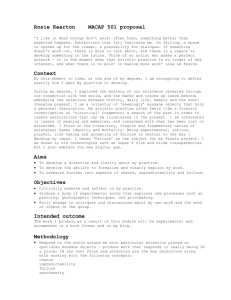

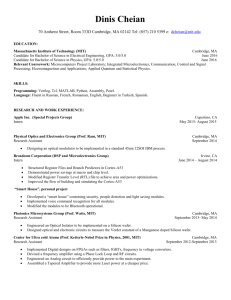


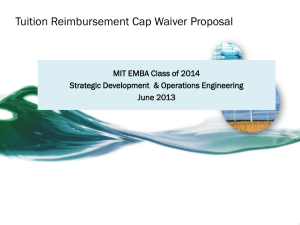

![The Politics of Protest [week 3]](http://s2.studylib.net/store/data/005229111_1-9491ac8e8d24cc184a2c9020ba192c97-300x300.png)

